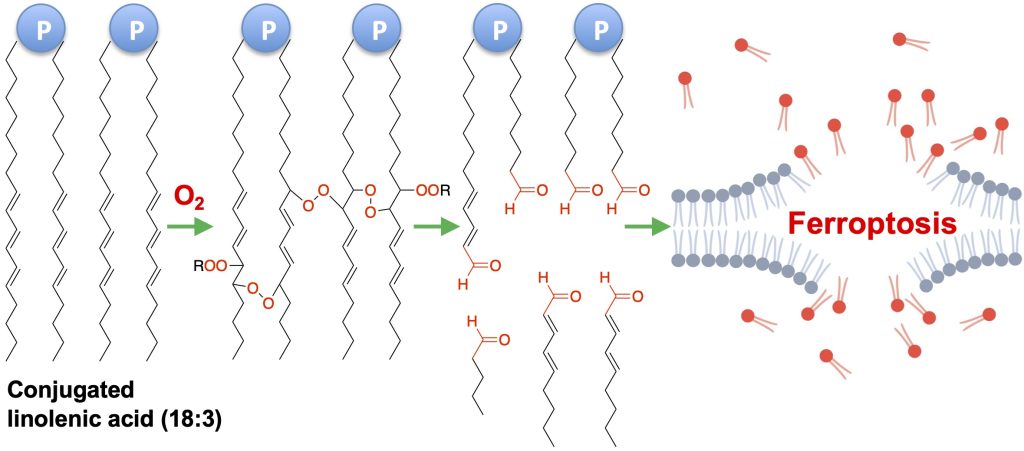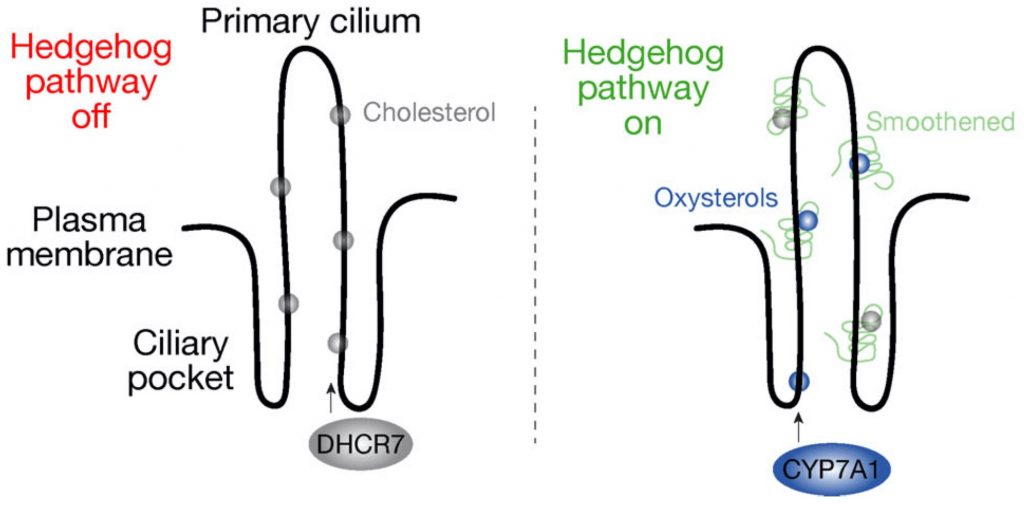This paper aims to understand the chemical and biochemical mechanisms underlying the different potency of conjugated and nonconjugated polyunsaturated fatty acids in inducing ferroptosis. Check out the paper here.

This paper aims to understand the chemical and biochemical mechanisms underlying the different potency of conjugated and nonconjugated polyunsaturated fatty acids in inducing ferroptosis. Check out the paper here.

Congratulations to Dr. Hideaki Tomita and coauthors! In this work, we investigated the impact of defective cholesterol biosynthesis at the step of DHCR7 on embryonic neurogenesis, the underlying mechanisms, and ways to rescue the neurogenesis phenotypes. Check out the paper here!

This is a collaboration with Prof. Brian Werth in the Department of Pharmacy and Dr. Hari Polenakovik at Wright State U School of Medicine! Check out the paper here. Congrats, Rutan!
Well done, Amy! Check out this work here!

By correlating lipid profile, MIC and time-kill profiles, we found that “Synergy Between Beta-Lactams and Lipo-, Glyco-, and Lipoglycopeptides, Is Independent of the Seesaw Effect in Methicillin-Resistant Staphylococcus aureus“. Congrats, Rutan!
We found that the amount and types of released lipids did not correlate with S. aureus survival against daptomycin and that not all agr-deficient S. aureus strains display daptomycin tolerance due to released lipids by the bacteria, in contrast to previous work. Check out the paper below!
This paper covers a lot of cool studies in drug and drug metabolites characterization, including some of ours. Check out the paper here.

Benzalkonium chlorides are a major component of widely used disfectants, such as Lysol and Clorox, which has seen greatly increased usage during COVID-19. This work shed light on the potential neurotoxicity of these compounds. Check out the paper here.

This work identified Hedgehog signaling negatively regulate DHCR7 and positively regulate CYP7A1, leading to increases in Smo-activating oxysterol levels! Check out this paper here.

This improved radical clock allows the measurements of some new lipid peroxidation rate constants, particularly those containing highly conjugated systems, such as vitamin A, vitamin D3, and conjugated polyunsaturated fatty acids. With this “clock”, the full kinetic picture of lipid peroxidation can be elucidated now. Congrats to Qunyh, Ryan, Rutan, and our former members David Lee and Andrew Dinh! Check out the paper here.
